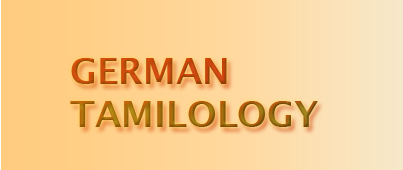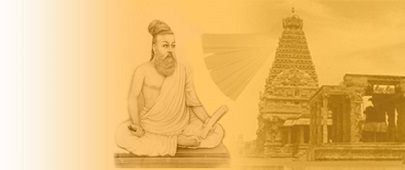Retrieval of rare herbal medicine for Rabies Hydrophobia
More than fifty years ago, I faintly remember that my great uncle, who was a medical trader of
certain indigenous medicines, told me that several decades ago, the Germans “… lifted our
indigenous medical secrets! …” From then on, I was nursing a desire to find out the truth. For
this, I learnt the German language for nine semesters and registered for a doctoral research on
German activities in Tamilnadu. A German expert in this field, the late Professor H.W.
Gensichen, hinted that there could be some German diaries and medical notes which were sent from
Tamilnadu 300 years ago, then preserved in the Francken’s foundations archives in the erstwhile
east Germany. The archives Director Mr.Jürgen Storz told me that there were as many as 200,000
diaries, manuscripts, travel accounts, station registers, curious observations etc., all
pertaining to the activities of the German missionaries in Tamilnadu during 18th, 19th and 20th
centuries. I even saw two sacks full of Tamil and Telugu palm leaves bundles! The Germans, who
came here to Tamilnadu 300 years ago, took away many indigenous medical notes. One of them
relates to a medical prescription, to prepare the herbal medicine to cure a dying rabies
patient.
THE DISEASE Rabies-Hydrophobia is a dreadful as-yet 100% fatal disease. Rabies
continues to be a serious public health problem in many countries, especially in developing and
under-developed countries. Some dogs, which breed the dreadful rabies virus in their mouths, are
the carriers of this disease. In a few countries like India, there are stray dogs, roaming about
on roads and there are no rigid rules and legislations to regulate the upbringing by their
owners. If these stray dogs bite a passerby, he is rushed to the government hospital and given
the ARV (Anti Rabid Vaccination). The poor slum urchins and even the affluent ones, while
playing with their canine pets, contract this disease. The saliva of rabid dogs, when it comes
into contact with the skin of the human preys, with even a slight bruise, transmit into the
blood system, the rabid virus which in turn, after many weeks or even months, enter into the
nervous system and affect finally the brain. At this stage, the patient crawls, sometimes barks
like a dog and shows deep aversion to water. (Hydro=water; phobia=aversion) and dye out in the
most cruel and miserable manner!
THE MEDICINE The native Tamil doctors, 300 years ago, treated rabies victims
with the herbal medicine, the formula of which, I found in Germany in 1986 in a brittle German
diary of ca.18th century. In this prescription, I read the names of a few indigenous herbal
samples, which grow in the tropical Tamilnadu during August to March, and the name of a certain
wild animal, the ash of whose skin together with the herbs were used to prepare this medicine.
IMPORTANCE OF THIS PROJECT German missionary Christoph Samuel John (1747 – 1813)
copied a Tamil medical prescription, wrote short notes in German for each ingredient and sent
this diary / letter to Germany. This medical note consisted of five ingredients, the paste of
which, when orally administered to dying rabies patients, saved them. A leading German
pharmaceutical company HOECHST (later, Hoechst Marion Roussel) had published a news item in THE
HINDU newspaper dated 10 May, 1989 that every year, 30, 000 people die in India due to this
disease. This number will be still more, the world over. At the critical stage of this disease,
when the rabid virus entered the nervous system, the patients are locked up in a cell room,
allowed to die and their dead bodies are burnt and not even given to their family for the last
rites for fear of infection. Even at such a critical stage, if the herbal medicine, as
prescribed in this German diary could be given, the rabies victims can be saved. This is
certainly a laudable medical aspect, that several centuries ago, the Tamil medical men knew of
such a life saving medicine, when their counterparts in other parts of the world did not at all
know of such a medical treatment then and even till this day! My efforts to bring out this
medical project with the kind assistance of Professor Rothermund, who took up the matter with
the German pharmaceutical company HOECHST, unluckily were rendered futile!
THE METHODOLOGY: Certain medical, zoological and public health protocols
prevented me from dispensing this medicine to the dying rabies patients. As one of the
ingredients is to be prepared from the skin of a wild animal, the animal rights activists and
even the law of the land may place hindrance for this. This problem can be solved if we make use
of the skins of such animals after they died. As I am not a medical doctor, I cannot bring out
this medicine, all by myself. I wish to interact and work with a medical organization to
revolutionize the fight against rabies. An international patent has to be obtained. A cost
effective medicine, as prescribed in the German diary has to be prepared, tested on rabies
patients with the cooperation of philanthropic medical research foundations, and finally the
medicine should be made available to the rabies victims at nominal cost or even free of cost.
MY SPADE WORK: With a view to publicize this medical aspect, I even presented a
research paper on this rabies hydrophobia project. Detailed information about this medical
project can be had from my research paper, presented at the international conference in Berlin
16-18 Sept., 2010, which had been published. “German Missionaries and Rabies Hydrophobia:
Mission History as History of Globalization of Indigenous Tamil Medical knowledge of 18th
Century.” Published in: Ulrich van der Heyden & Andreas Feldtkeller, (ed.) Missionsgeschichte
als Geschichte der Globalisierung von Wissen, Franz Steiner Verlag, Stuttgart, Germany, 2012,
pp. 213 – 223.



